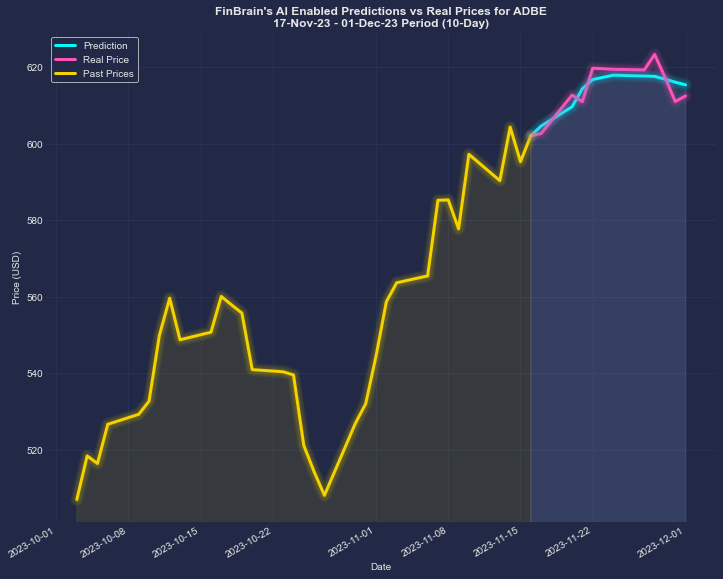Top 10 Ways For Using Sentiment Analysis In Stock Trading Ai From The Penny To copyright
It is crucial to employ sentiment analysis while trading AI stocks, especially for penny stocks and copyright markets where sentiment is a major factor. Here are 10 tips for using sentiment analysis to the maximum when trading in these markets.
1. Sentiment Analysis Understanding its importance
Tip: Be aware that short-term movements in prices are influenced by sentiment, especially on speculative stocks and copyright markets.
What is the reason? The public’s mood often precedes price movement and can be a significant trading indicator.
2. Use AI to Analyze Multiple Data Sources
Tip: Incorporate diverse data sources, including:
News headlines
Social media sites, like Twitter, Reddit and Telegram
Forums and blogs
Earnings announcements, press releases and earnings announcements.
Why: Broader coverage gives an overall picture of sentiment.
3. Monitor Social Media in real Time
Tip: Use AI tools like StockTwits, Sentiment.io, or LunarCrush to track trending discussions.
For copyright The focus should be on the influencers.
For Penny Stocks: Monitor niche forums like r/pennystocks.
The reason: Real-time tracking allows you to capitalize on emerging trends.
4. The focus is on the Sentiment Metrics
Think about metrics like:
Sentiment Score: Aggregates positive vs. negative mentions.
Volume of Mentions Tracks buzz about an asset.
Emotion Analysis: Measures excitement and fear. It also measures uncertainty, anxiety, or.
The reason: These indicators provide actionable insights into market psychology.
5. Detect Market Turning Points
Use sentiment data to identify extremes of positivity or negativity within the market (market bottoms).
The reason: Strategies that aren’t conventional often thrive at sentiment extremes.
6. Combine Sentiment and Technical Indicators
Tip: Pair sentiment analysis with conventional indicators like RSI, MACD, or Bollinger Bands for confirmation.
Reason: The mere fact of a person’s feelings could lead to false signals. Technical analysis gives context.
7. Automatically integrating sentiment data
Tip: AI trading bots should include sentiment scores in their algorithms.
Why: Automated systems allow rapid responses to changes in sentiment on volatile markets.
8. Account for Sentiment Management
Beware of pump-and-dump schemes and fake news in particular copyright and penny stocks.
How: Use AI-based tools to detect suspicious behavior. For instance sudden rises in mentions from low-quality or suspect accounts.
What’s the reason? Knowing how to identify manipulation will protect you from fraudulent messages.
9. Backtest Strategies using Sentiment Based Strategies
Examine the effect of past market conditions on trading driven by sentiment.
Why: This ensures that sentiment analysis will add value to your trading strategy.
10. Track Sentiment of Key Influencers
Utilize AI to monitor influential market players, such as famous analysts or traders.
For copyright: Pay attention to posts or tweets from figures such as Elon Musk and prominent blockchain developers.
Keep an eye on the industry’s analysts and activists to find Penny Stocks.
Why: Influencers can influence market sentiment.
Bonus: Combine Sentiment Information with the fundamentals and on-Chain data
Tips: Mix sentiment with fundamentals for penny stocks (like earnings reports) as well as on-chain data for copyright (like wallet movement).
The reason: Combining different types of data can create a holistic picture and reduce the reliance on only sentiment.
These tips will help you make the most of sentiment analysis to improve your AI trading strategies, whether they’re aimed at penny stocks or cryptocurrencies. Have a look at the best over here on free ai trading bot for blog recommendations including best copyright prediction site, artificial intelligence stocks, ai trader, ai trading bot, ai trading, ai stock market, ai stock prediction, copyright ai, copyright ai, copyright ai bot and more.

Top 10 Tips For Ai Stockpickers, Investors And Forecasters To Pay Close Attention To Risk Metrics
By paying attention to risks, you can ensure that AI stock picking, predictions, as well as investment strategies and AI are able to withstand market volatility and balanced. Being aware of and minimizing risk is crucial to protect your portfolio from massive losses. It also allows you make informed data-driven decisions. Here are 10 best ways to incorporate risk metrics into AI stock picking and investment strategies:
1. Understand Key Risk Metrics Sharpe Ratio, Maximum Drawdown and Volatility
Tip: To assess the efficiency of an AI model, concentrate on the most important indicators like Sharpe ratios, maximum drawdowns, and volatility.
Why:
Sharpe Ratio is a measure of return relative risk. A higher Sharpe ratio indicates better risk-adjusted performance.
Maximum drawdown measures the largest loss from peak to trough to help you assess the potential for large losses.
The term “volatility” refers to market risk and fluctuation in prices. A lower volatility level indicates stability, while high volatility indicates greater risk.
2. Implement Risk-Adjusted Return Metrics
TIP: To gauge the effectiveness of your AI stock selector, use risk-adjusted indicators such as Sortino (which focuses primarily on downside risk), and Calmar (which evaluates the returns with the maximum drawdown).
What are these metrics? They focus on how your AI model performs in the context of the level of risk it is exposed to and allows you to determine whether returns justify the risk.
3. Monitor Portfolio Diversification to Reduce Concentration Risk
Make use of AI to improve your portfolio’s diversification across different asset classes, geographical regions, and industries.
The reason: Diversification reduces the risk of concentration. Concentration occurs when a portfolio is too dependent on one stock or sector, or market. AI can assist in identifying connections between assets and then adjust the allocation to lessen the risk.
4. Track beta to gauge the market’s sensitivity
Tip This coefficient can be used to determine the degree of sensitivity your portfolio or stocks are to market volatility.
The reason: Portfolios that have betas greater than 1, are more volatile. A beta that is less than 1 suggests lower volatility. Knowing beta can help you adjust risk exposure according to market movements and the risk tolerance.
5. Set Stop Loss Limits and take Profit Limits based on Risk Tolerance
Use AI models and predictions to determine stop-loss levels as well as take-profit levels. This will help you control your losses and secure the profits.
The reason: Stop-losses shield the investor from excessive losses, while take-profit levels secure gains. AI can assist in determining optimal levels based on historical price movements and volatility, while maintaining a balance between reward and risk.
6. Monte Carlo Simulations: Risk Scenarios
Tips Use Monte Carlo simulations to model an array of possible portfolio outcomes under different markets and risk factors.
Why? Monte Carlo simulations allow you to assess the probability of future performance of your portfolio. This lets you better prepare yourself for different risk scenarios.
7. Use correlation to determine systemic and unsystematic risks
Tips. Use AI to analyze the correlations between your portfolio of assets and market indices. You can identify both systematic risks and unsystematic ones.
What is the reason? Systematic risks impact all markets, whereas unsystematic risks are unique to each asset (e.g. concerns specific to a company). AI can minimize unsystematic and other risks by recommending less-correlated assets.
8. Check the value at risk (VaR), in order to determine the potential loss
Tips: Value at Risk (VaR), based upon a confidence level, can be used to determine the possibility of losing a portfolio in a certain time period.
Why is that? VaR can help you determine the worst-case scenario that could be, in terms losses. It gives you the chance to evaluate the risk that your portfolio faces during normal market conditions. AI can be used to calculate VaR dynamically while responding to market changes.
9. Set Dynamic Risk Limits Based on Market Conditions
Tips: Make use of AI to automatically adjust risk limits in response to the volatility of the market as well as economic and stock correlations.
The reason: Dynamic risks the exposure of your portfolio to excessive risk in the event of high volatility or uncertain. AI can analyze real-time data and adjust your portfolio to keep your risk tolerance to acceptable levels.
10. Use Machine Learning to Predict the outcomes of tail events and risk factors
Tips: Make use of machine learning algorithms based upon sentiment analysis and historical data to predict extreme risks or tail-risks (e.g. market crashes).
The reason: AI models can identify risk patterns that conventional models might miss, helping to plan and anticipate rare but extreme market situations. The analysis of tail-risks helps investors be prepared for the possibility of catastrophic losses.
Bonus: Frequently Reevaluate Risk Metrics in the face of changing market Conditions
Tip. Update and review your risk assessment as market conditions change. This will enable you to keep pace with changing economic and geopolitical developments.
The reason is that market conditions change frequently, and using outdated risk models can result in inaccurate risk assessment. Regular updates let your AI models to adjust to the changing dynamics of markets, and reflect new risk factors.
This page was last edited on 29 September 2017, at 19:09.
If you pay attention to risk metrics and incorporating these into your AI strategy for investing, stock picker and prediction models to create an investment portfolio that is more robust. AI is a powerful tool that can be used to monitor and evaluate risks. Investors are able to make informed decisions based on data and balance potential returns with risk-adjusted risks. These guidelines are designed to help you create a robust risk-management framework. This will increase the reliability and stability of your investments. Read the top rated read review for website tips including ai for trading stocks, ai stock picker, ai trading, ai trading bot, trading with ai, ai copyright trading bot, ai investing app, ai trading bot, ai trading, stock trading ai and more.
